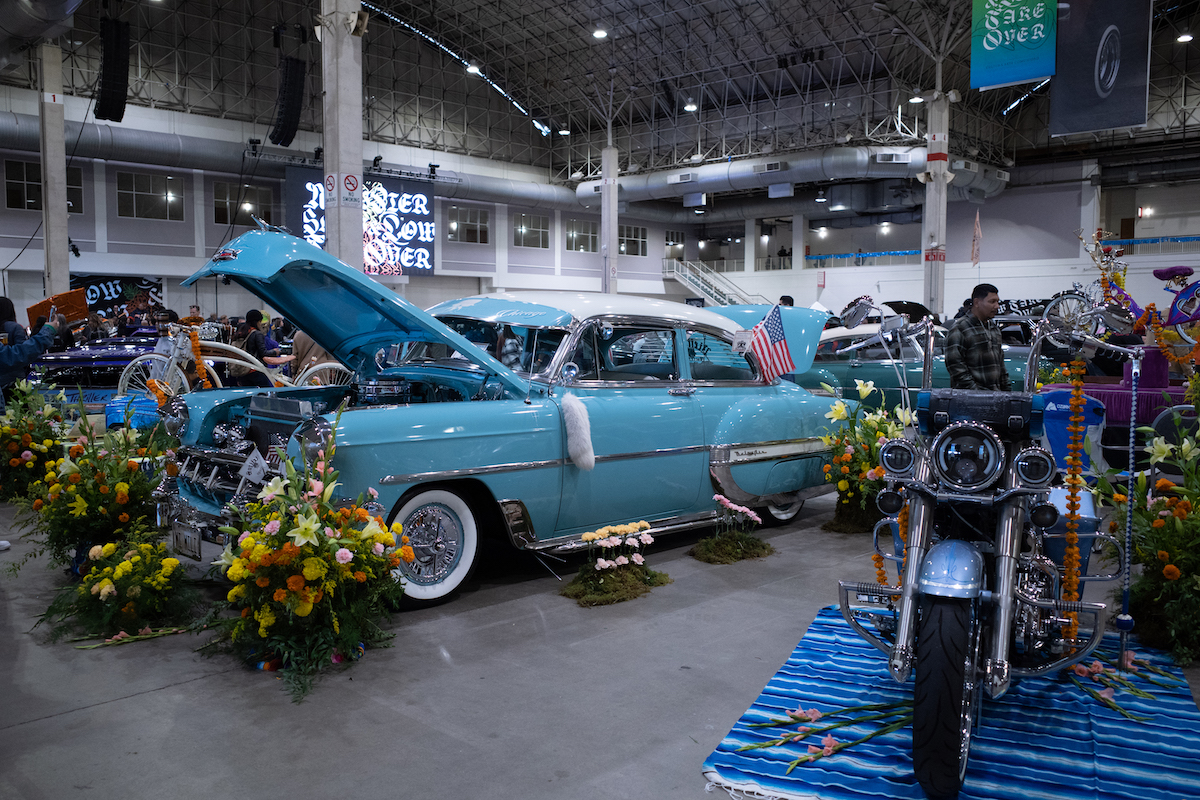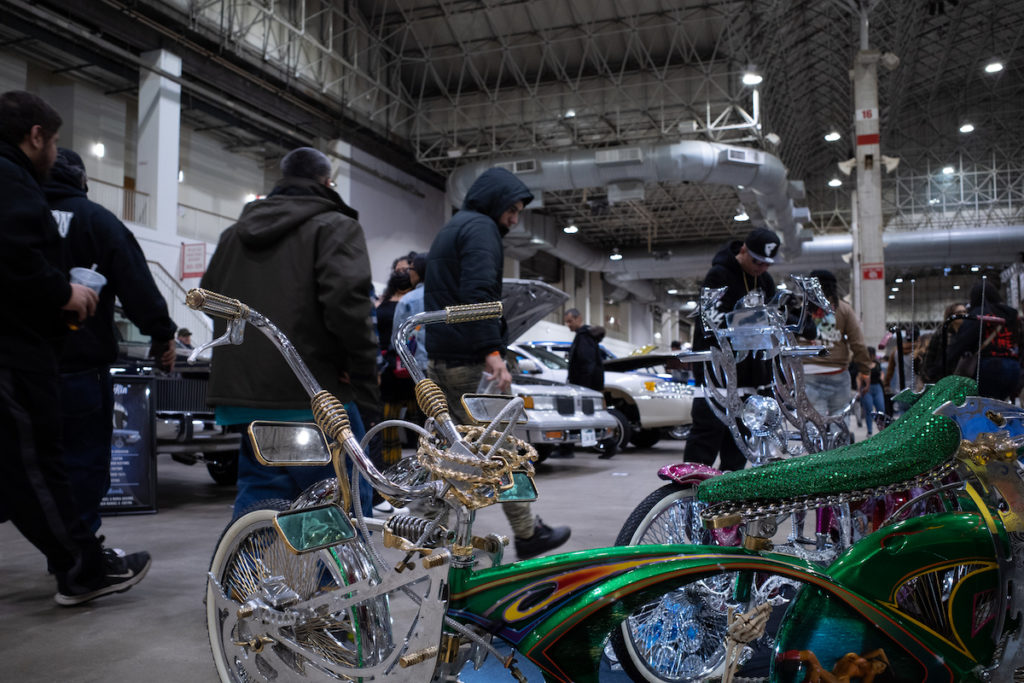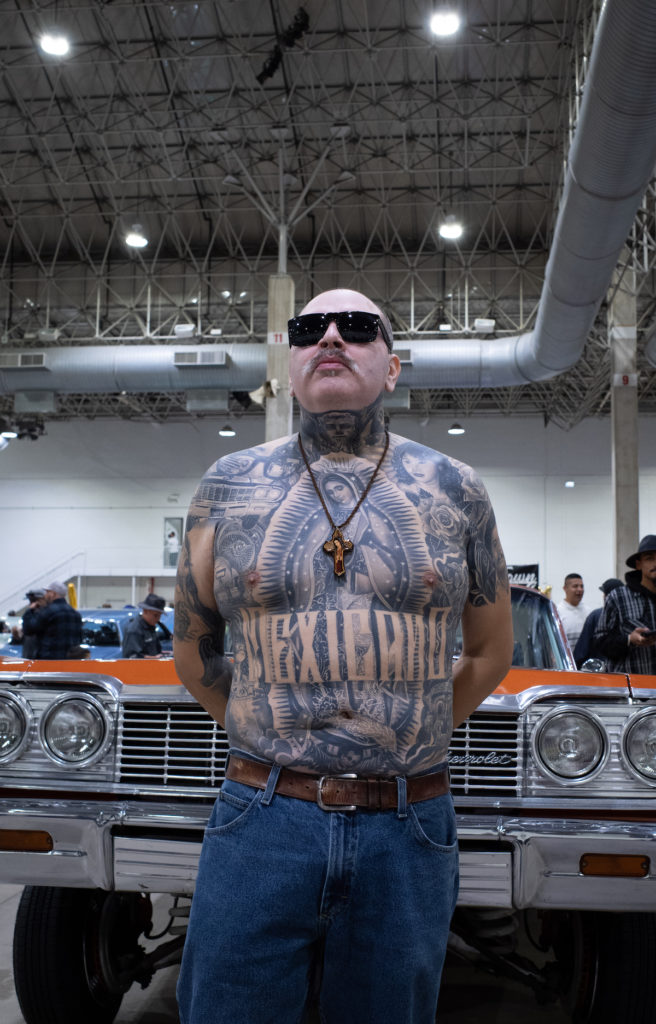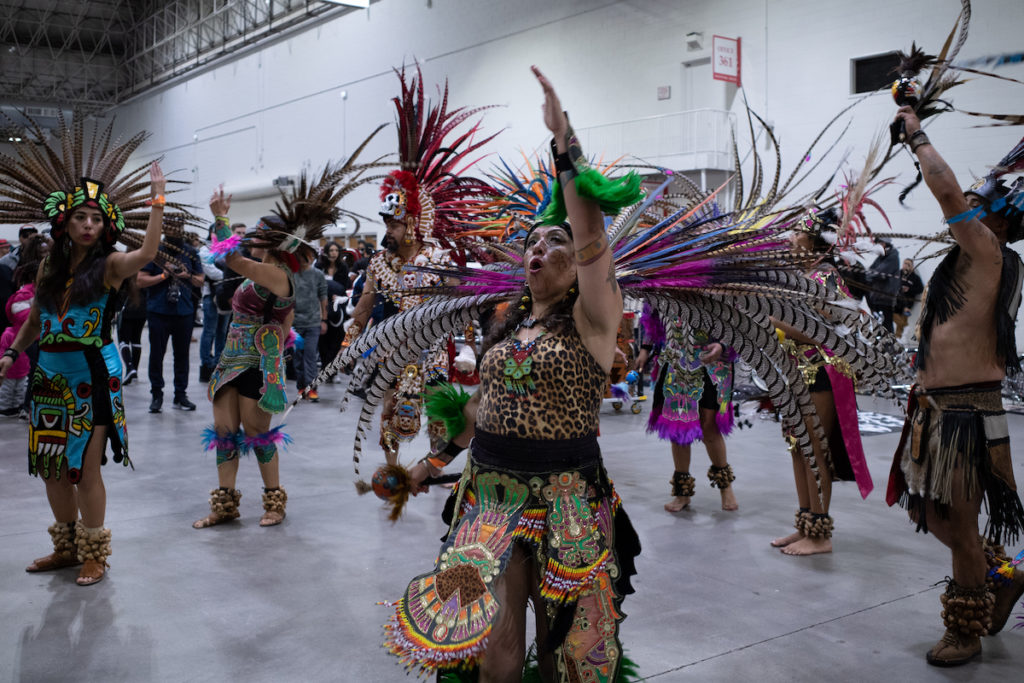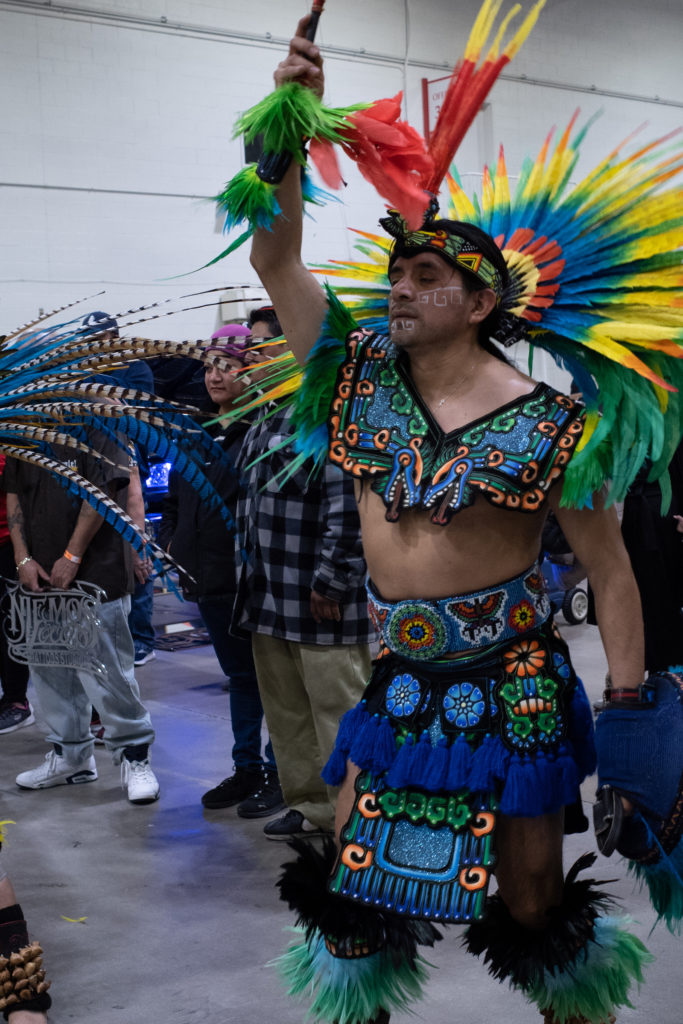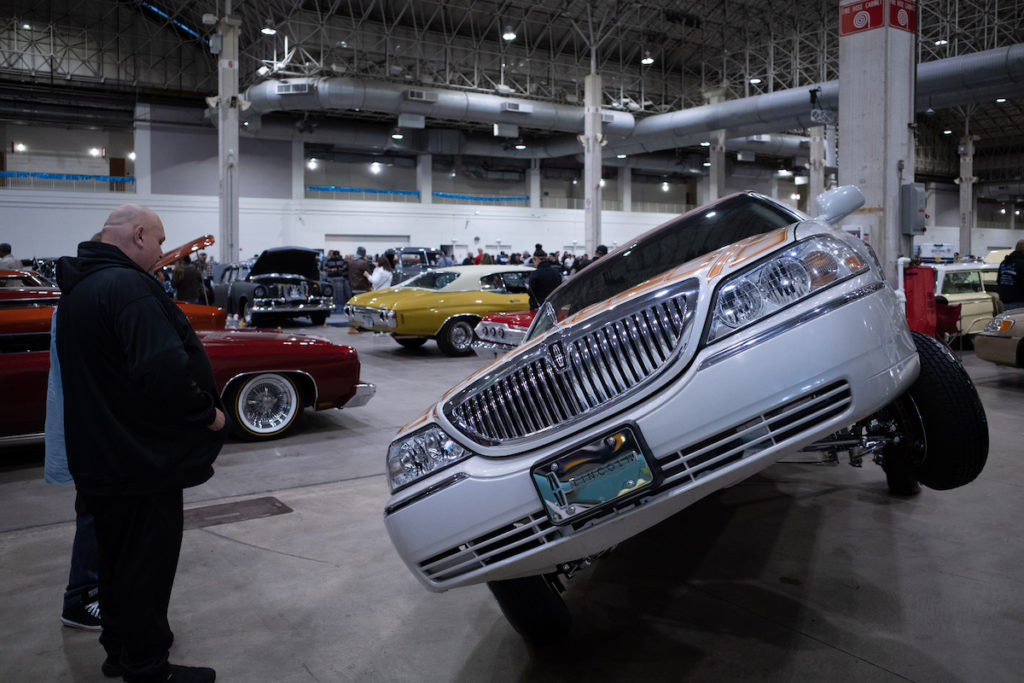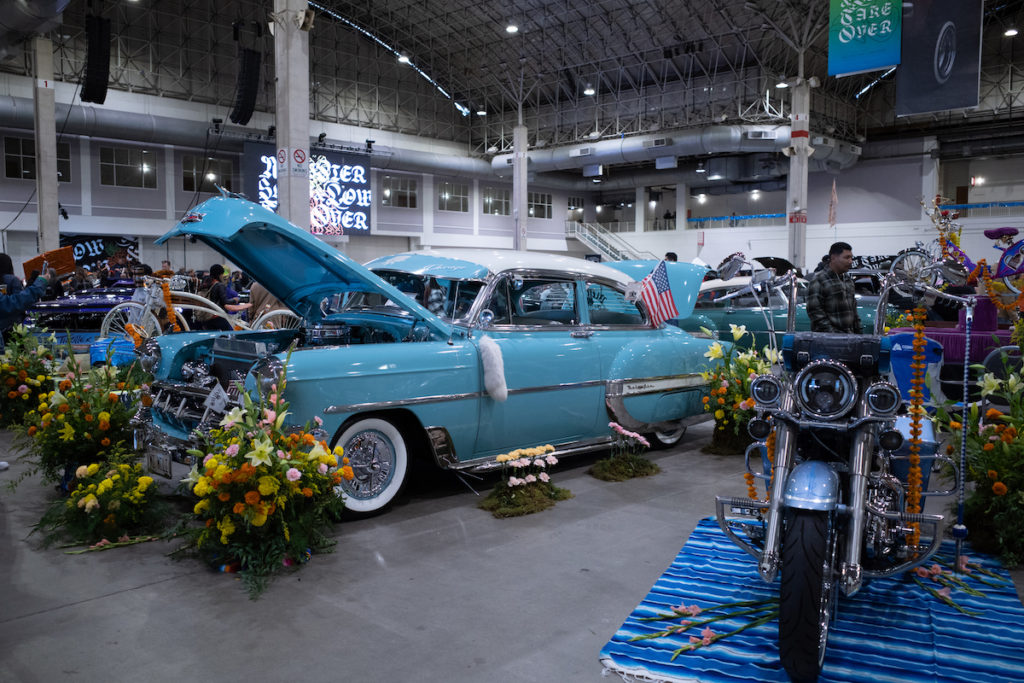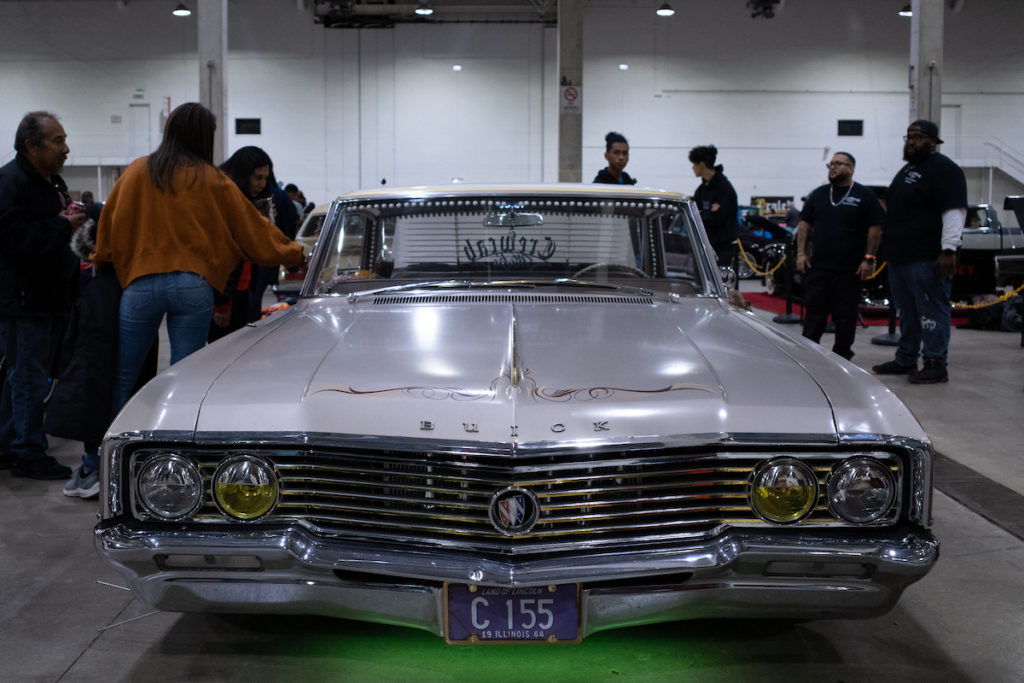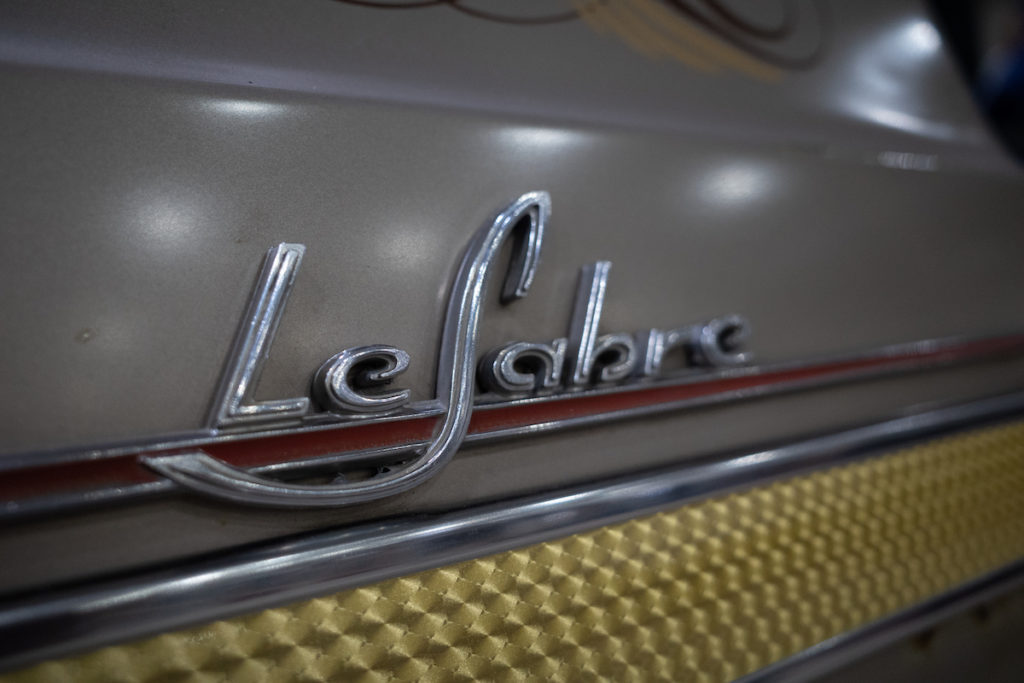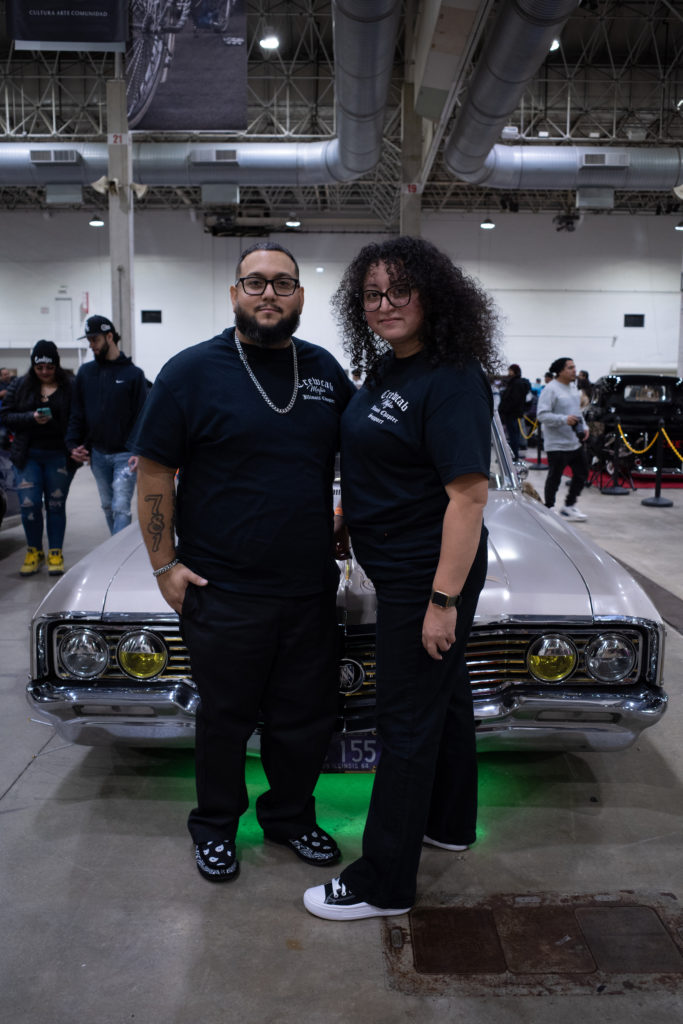After a three-year hiatus, Slow & Low, Chicago’s lowrider festival, opened its doors once more this past Saturday—but for the first time ever, the show took place at Navy Pier.
Lowrider culture, a subculture rooted in the Mexican-American/Chicano experience, revolves around cars, motorcycles and bikes customized with mechanical modifications and elaborate airbrush decals. Over the years, it has transcended borders and barriers: Slow & Low’s takeover of the Pier drew in more than 8,000 people, with some flying or driving in from as far away as Texas, Florida and California.
For many attendees, it isn’t just a car show, but a celebration of culture and identity. In years past, the fashion, artwork, and tattoo styles derived from lowrider culture have been stigmatized and criminalized. But at Slow & Low, they’re a point of pride.
Even in a new location, the festival held true to its iconic atmosphere, with cumbia vibrating from the walls, dozens of vendors, a photography installation at the Pier’s Wave wall, performances by notable DJs and local talents like Lester Rey and Codigo Verde, Aztec dancers performing for crowds, and—of course—hundreds of lowriders and lowrider bikes.
“For the past five years, Navy Pier has been reaching out to me and sort of courting us,” said Lauren M. Pacheco, co-founder and producer of Slow & Low. To keep the festival connected to its roots in Pilsen and its community, Pachecho said, it was vital to feel as though Slow & Low was taking over—so that “for one day it is our space.”
Slow & Low was first held in 2011 near the intersection of Cermak Road and Halsted Street. That year, the festival had around fifty exhibitors and 500 attendees; it continued to be held outdoors in Pilsen for the next few years, and it soon began to outgrow the space. In 2018, Slow & Low hosted its biggest festival to date, bringing in more than 15,000 visitors and over 300 exhibitors.
Part of Slow & Low’s continued success was the ability for the community to just show up—which needed to be replicated when the festival left Pilsen. Organizers put accessibility front and center by providing hourly shuttle buses between the Pilsen 18th Street Pink Line stop and the Pier.
“It was really important for us, in our negotiations with Navy Pier, to really make sure that the admission ticket price was low,” said Pacheco. They also made sure that parking was accessible by coordinating public lots in nearby garages.
“We really just understood their vision, we understood that they have to have creative control,” said Miguel Alfaro, Arts, Culture and Engagement Program Manager at Navy Pier and manager for local band Codigo Verde. “From the design, to all the art curation, performances, they really touched every little part of it.”
Car clubs from across the city showed up—and for some, the festival was the first opportunity to show off their ride.
“It’s been roughly a five-year process, and there’s been a lot of work put into it. I’m probably roughly around $50,000 into it,” said El Mexicano, who is part of the Sicklife Crew in Chicago. He posed shirtless in front of his 1964 four-door orange Chevy Impala, showing off a tattooed torso from the neck down.
“He’s an award winning artist. I’m an award winning canvas,” said El Mexicano, pointing out his favorite tattoo, an image of the Virgen de Guadalupe across his chest. He and his buddy from Sick Life Tattoo tour across the country, with aspirations to show at car and tattoo events in Paris, London and Italy—a testament to the international growth of lowrider culture.
For Pacheco, it “speaks volumes” that people around the world “who appreciate car culture, appreciate the opportunity to tailor a vehicle in a way that is an extension of their personal identity,” are interested in lowrider culture.
Pedro Santiago, a Puerto Rican from the Chicagoland area, said his upbringing, love for cars, and a Facebook group drew him back into the scene. “I just got back into it. I’ve always had the love for it,” said Santiago, a member of Crewcab Mafia.
Crewcab got its start as a Facebook group, but now has chapters across the country, and welcomes people at any stage they are with their car. Their only rule? Four doors only.
“[The car club community] kind of frowns upon the four-door car, like ‘oh, it’s a cheap car, it’s a parts car,’” said Santiago. “Now, we’re showing them that these cars can look cool and do all the same things.”
Santiago showed a 1964 Buick LeSabre, restored to its original form with wired wheels and a gorgeous beige interior.
“I consider it like an art gallery. You get a little bit of [a] taste of everything,” said Santiago’s wife, Christina Aviles, who has traveled along to many car events.
Slow & Low brought together car clubs from far and wide while seeking to keep its integrity and identity. But many are left wondering if Navy Pier will become a permanent home for the festival.
“It’s to be determined,” said Pacheco, adding that Slow & Low has post-festival projects to focus on. “We do want to publish a new book, a very special catalog, representing this indoor edition of Slow & Low.”
The lowrider community is multigenerational, and being passed on. As it gains international notoriety, paying homage to its roots is a must. But for now, the lowrider community is left with a memorable day in history—the day they took over the Pier.
Jocelyn Martinez-Rosales is a Chicago-based multimedia journalist covering communities of color with a social justice lens.

